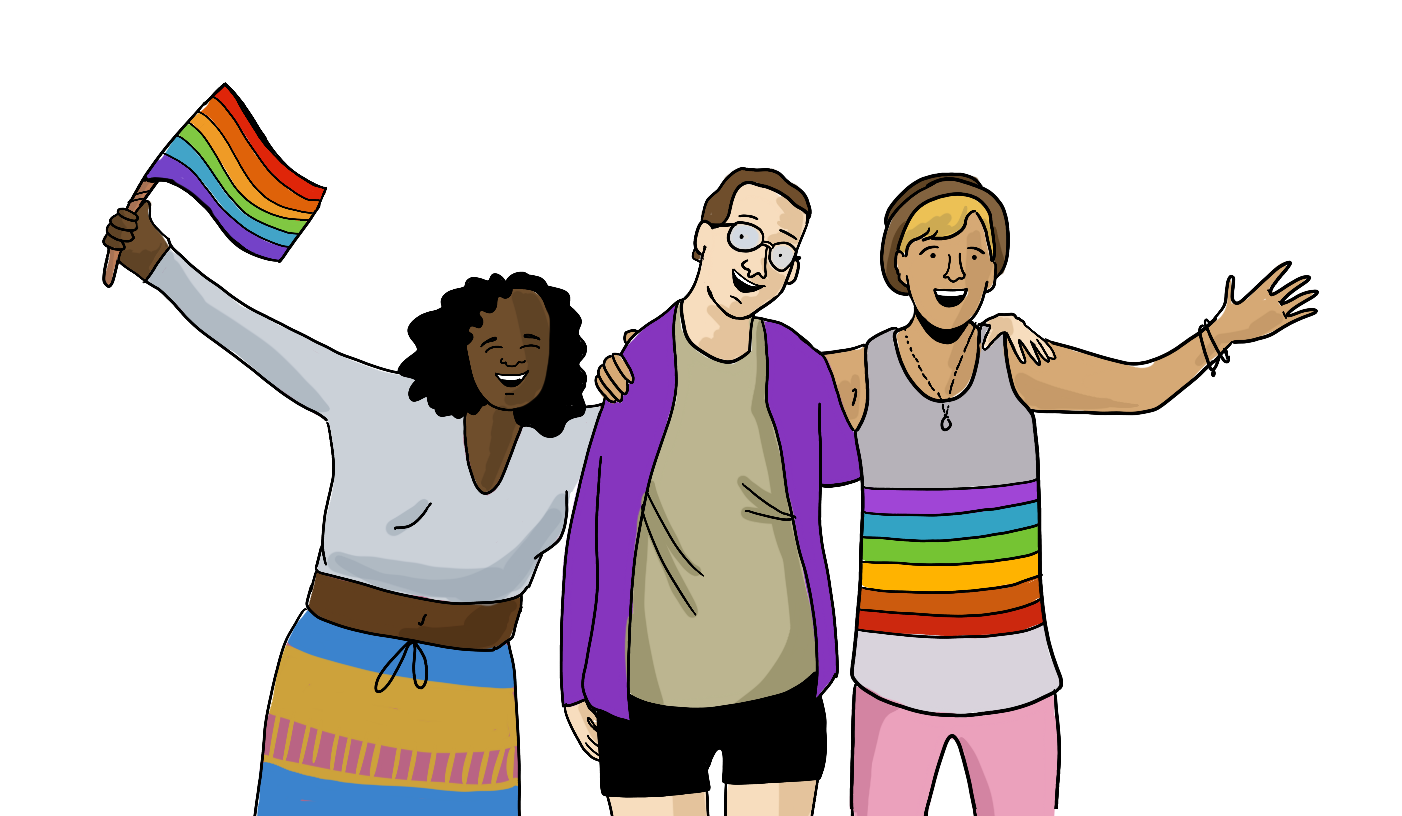
What is Intersectionality?
Intersectionality is a concept that describes the way multiple oppressions merge together in various contexts to impact an individual. A person’s experiences in life exist within social systems that can create privileges for some groups, and oppression for others. As examples, these can include race, gender, biological sex, sexual orientation, socioeconomic status, (dis)ability, and HIV status.
This concept first emerged from the writing of by Black feminist activists and scholars while discussing the ways that feminism and law did not address issues concerning people living with more than one marginalized identity (for example: Black women; Moradi & Grzanka, 2017).
The Intersectionality framework is useful when examining issues that affect LGBTQ2 people of Color (PoC), who may experience heterosexism and racism, as well as intersections of heterosexism and racism in different contexts, whereas white LGBTQA2 people may only experience homophobic prejudice
From an intersectional perspective, LGBTQ2 people of colour (PoC) may experience further hardships related to the intersection of their queer identity and their other oppressed identities.
This is sometimes called the double (or triple) jeopardy hypothesis, which states that LGBTQA2 PoC, or others with intersecting minority identities, experience greater stress because they experience discrimination in the forms of homophobia, racism and, at times, transphobia. In other words, these types of discrimination add together and create more stress experiences.
As another example, a (dis)abled gay man with a low socioeconomic status may also experience greater stress due to discrimination and barriers in accessing resources, that result from ableism, homophobia and financial limitations.
But, intersectionality also suggests that the combination of multiple minority identities creates unique stress experiences.
For example, this would suggest that the lived experience of a Black, Lesbian woman comes with unique challenges and stressors that lesbian women of other ethnicities/racial identities would not experience.
This also applies to the intersection of sexual and gender identities as well. Some reports have found that transgender people are more likely to identify as bisexual than cisgender people. Bisexual-identified trans people would face hardships that monosexual (i.e., gay, lesbian, hetorosexual) trans people, and cisgender bisexual people (Meyer, Brown, Herman, Reisner, & Bockting, 2017).
Research suggest that both of these theories of intersectionality are likely true; that, to some degree, stressor experiences do add together, but that people with specific combinations of minority identities, also experience unique challenges as well.
LGBTQ2 PoC sometimes feel disconnected from their ethnoracial/cultural community because of experiences of heterosexism. At the same time, they might feel alienated from the mainstream LGBTQ2 community due to experiences with racism and exclusion. LGBTQ2 PoC may take steps to conceal their sexual identity in an attempt to avoid experiencing multiple “layers” of stigma and discrimination.
Experiences and identities of PoC are generally not represented in mainstream LGBTQ2, potentially causing further alienation
For example, PoC have reported feeling pressure to “come out” with their sexual/gender identity, as mainstream LGBTQ2 knowledge posits that a person can’t be their authentic self unless they are fully “out”.
This ignores the real challenges that PoC face due to cultural homophobia or transphobia within their own ethnoracial groups. These situations might account for complex lived experiences that can lead to mental health problems related to anxiety and depression, to name a few.
“When I was first coming out, my friends were pressuring me in a way and pushing me to come out to everyone right now. I was like, ‘Whoa…I need a roof over my head. I need to be strategic about this.’ And I feel that in the mainstream community, there’s so much pressure to be out and be, you know, almost the poster child for queerness or whatever. And I feel like that isn’t really realistic for me or realistic for a lot of people I know that are racialized, because our communities are different.”
(Ghabrial, 2017)
PoC who are sexual and gender minorities may be excluded from the larger queer and trans community regarding their political agenda, prevalent beauty standards, and navigating the dating scene or engaging in romantic relationships.
Resilience Perspective
Beyond the added, complex stressors that living with oppressed intersectional identities can involve, a great deal of research has shown that some queer and trans PoC develop resilience at the intersection of these identities.
When ethnoracial and sexual and gender minority identities intersect, some people report being able to adapt to diverse settings, and feeling empowered to advocate for visibility of PoC or queer and trans people (Ghabrial, 2017; Ghabrial, 2019)